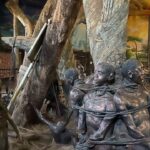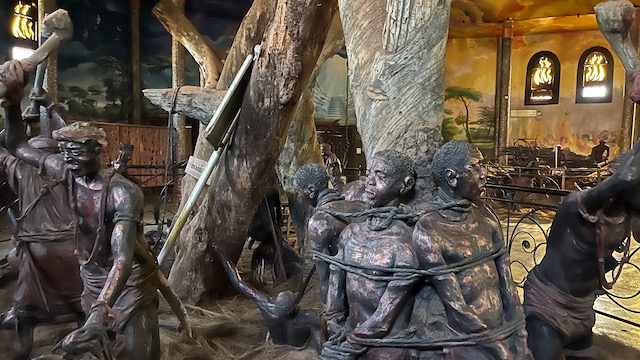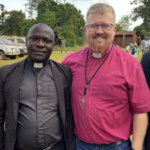
East African Trip Third Update – Understanding Ugandan Christianity

Discovering the Secret of East African Christian Faith
While America celebrates Gay Pride month, Ugandans celebrate another source of pride, Martyr’s Day.
One of the most moving experiences of my trip to East Africa was visiting the Anglican Church of Uganda’s Martyr Museum. For Ugandans, it’s more than a historical museum; it’s the source of their Christian heritage.
In the 19th Century, the King of Buganda wrote a letter to the Queen of England requesting missionaries be sent to his Kingdom to bring the message of the Gospel. The letter was printed in the newspaper, and the British Christian Missionary Society responded by sending missionaries.
The first wave of missionaries arrived in 1876, only to be arrested. By 1885, a very small Christian community emerged. Among those early pioneers was a 37-year-old Anglican Bishop, James Hannington. When he arrived, he was immediately arrested and eventually put to death.
Eventually, those pioneers began winning converts, and Christianity took root. But a new King, Mwanaga, came to power who saw the Christian message threatening his reign. He began to arrest Christians and brutally torture them to death.
On June 3, 1886, King Mwanaga put to death twenty-five young men for refusing to renounce their faith. They were taken to a place called Namugongo, the traditional execution site.
Just like Queen Mary, who burned the Anglican divines at the stake, the King of Buganda used the same method to evoke the Christians to renounce their faith.
When a Christian was arrested, their feet were bound together and then dragged on their backs to the site of the execution. The result of the dragging would peal the flesh of their backs to their bones. Rather than going directly to the fire, some of the Christians were dismembered and disemboweled. One exhibit displayed the executioner cutting off the feet of one of the Christians.
The martyrs were then wrapped in dry branches and leaves and soaked in oil that burned slowly. Executioners would light the branches at the feet first so they would slowly burn up toward the head. Eventually, the Christian would be consumed by fire. The agony and torturous pain involved was designed to get the Christians to renounce their faith.
Everything they were put through was designed to inflict excruciating pain so they would give into the pressure to renounce their faith.
But they didn’t.
Instead, like Paul and Silas in prison, they sang songs, recited psalms and hymns, and encouraged each other to endure to the end. None of them renounced their faith.
A princess and a member of the King’s court were included in the list of martyrs. She, too, died a martyr’s death.
But the King’s efforts backfired. Instead of eliminating Christianity, it began to grow. As word spread about the martyrs, more and more people converted from paganism to Christianity. Eventually, the lead executioner became so impressed with the God of the Christians’ power that he, too, converted to the faith.
Every Martyr’s Day in June, Christians all over Uganda pilgrimage to the site to remember the martyrs and their sacrifice so that East Africans can learn the Gospel. You can see groups of 20 to 30 people walking along the street, making their way to the site of the museum. Over a million people will gather on the grounds of the museum.
As we traveled throughout Uganda, meeting with different Bishops, the topic of the museum came up. They all said the same thing. “Now you understand.”
What was it that we were to understand?
It was the source of their devotion to the Christian faith. Those martyrs stand out as a testimony to the Ugandan Christians. They will nor cannot compromise the Gospel of Jesus Christ. It would be like spitting on the graves of the martyrs who sacrificed everything for the sake of Christ Jesus our Lord.




